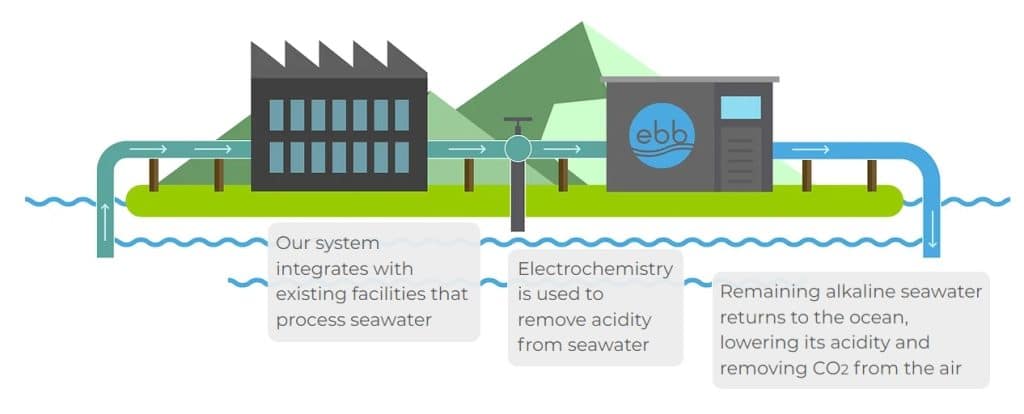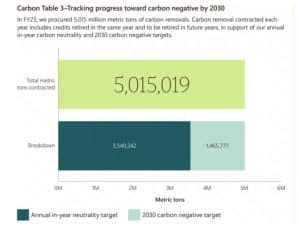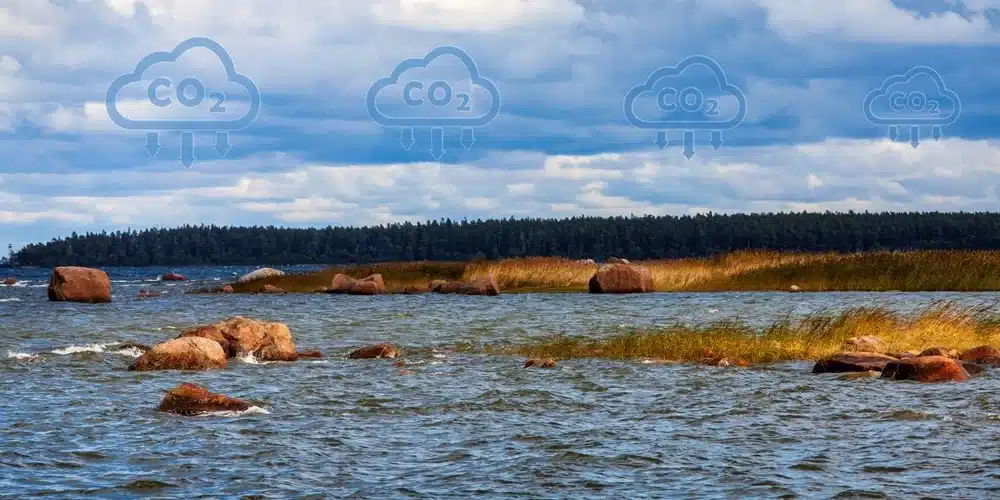Microsoft added another feather to its cap with this sustainability commitment. It has partnered with Ebb Carbon to remove up to 350,000 tons of CO2 over the next decade using Ebb Carbon’s Electrochemical Ocean Alkalinity Enhancement (OAE) technology. The entire deal focuses on marine carbon dioxide removal (mCDR), and is believed to be the biggest so far in this space.
Understanding Ebb Carbon’s Flagship OAE Technology
Ebb Carbon, a climate tech start-up focused on marine carbon dioxide removal (mCDR), operates on the philosophy that “the ocean is one of the largest carbon sinks on the planet.”
The company is pioneering a new method for capturing atmospheric carbon and combating ocean acidification, known as Electrochemical Ocean Alkalinity Enhancement (OAE).
Inspired by nature, Ebb Carbon’s solution mirrors how plants absorb CO2. Instead of relying on land-based methods, they target the ocean to capture and store vast amounts of carbon dioxide permanently.
The 3-Step Process
Ocean alkalization is a natural process that occurs over millions of years as rain erodes rocks and carries alkaline molecules to the sea. These molecules help balance the ocean’s chemistry and can absorb CO2 from the air. Ebb’s OAE technology extracts alkalinity directly from seawater using bipolar electrodialysis (BPED) technology.
This technique is highly efficient and occurs in a fraction of the time. The company typically follows three steps which are explained in the diagram below:
- Ocean deacidification
- Permanent CO2 storage
- Additional carbon removal

Regarding the deal, Ben Tarbell, CEO of Ebb Carbon, remarked,
“Microsoft is setting a powerful example with its commitment to becoming carbon negative by 2030 and by using its purchasing power to accelerate the most promising climate solutions. This agreement underscores the potential of Ebb Carbon’s technology to contribute meaningfully to gigaton-scale carbon removal in the years ahead.”
Credible media sources revealed that under the agreement, Ebb Carbon will start with an initial delivery of 1,333 tons of CO2 removals. Microsoft will have the option to secure up to an additional 350,000 tons over the next 10 years.
Brian Marrs, Senior Director of Energy & Carbon Removal at Microsoft, also highlighted the significant role of the ocean in balancing the carbon cycle and praised Ebb’s OAE technology. He expressed his sentiment by saying,
“Ebb has developed technology to leverage the natural attributes of the ocean—its massive surface area and natural processes that already pull CO2 from the atmosphere—to durably remove and store large volumes of atmospheric carbon. We are pleased to collaborate with Ebb to accelerate the scientific foundation for ocean-based carbon dioxide removal and explore the potential of ocean-based carbon removal solutions at scale.”
Advancing Oceanic Carbon Removal through Partnerships
Significantly, Ebb Carbon runs a 100-ton-per-year ocean carbon removal system at the U.S. Department of Energy’s Pacific Northwest National Laboratory (PNNL) in Sequim, Washington. This project, in partnership with public, private, academic, and philanthropic organizations, aims to advance ocean CDR and promote safe, science-based practices.
The company is also partnering with the National Oceanic and Atmospheric Administration (NOAA) and the University of Washington. They focus on researching various carbon removal models to understand local impacts on carbon and acidification, as well as their effects on marine life such as oysters and eelgrass. Subsequently, they publish their findings to enhance transparency and public understanding.
Leveraging Isometric Protocol for Reliable CO2 Removal
Microsoft and Ebb will use Isometric’s Ocean Alkalinity Enhancement (OAE) protocol to verify carbon removal. Stacy Kauk, P.Eng., Chief Science Officer at Isometric, confirmed this.
She also stated,
“OAE is promising because of the vast surface area of the ocean. This same fact requires careful monitoring, reporting, and verification (MRV). Isometric’s protocol requires measurements and the use of internationally recognized ocean models to quantify carbon removal so buyers and suppliers can be sure one credit equals one tonne of carbon dioxide removed from the atmosphere. This is another step towards creating trust and transparency in carbon markets.”
Notably, Isometric’s OAE protocol is the world’s first protocol for this kind of carbon removal. It outlines how OAE can be carefully monitored, reported, and verified (MRV). This ensures that buyers can confidently purchase OAE carbon credits, knowing they meet high standards.
Microsoft’s Commitment to Carbon Removal Solutions
Apart from reducing direct operational emissions, investing in carbon removal is one of Microsoft’s key sustainability initiatives.
Microsoft’s latest sustainability report revealed that last year the company contracted 5,015,019 metric tons of carbon removal to be retired over the next 15 years.

Source: Microsoft sustainability report
For example, Microsoft recently partnered with UNDO to permanently remove 15,000 tons of CO2 from the atmosphere through enhanced rock weathering. Additionally, Direct Air Capture firm 1PointFive has also teamed up with Microsoft to remove 500,000 metric tons of carbon dioxide from the atmosphere.
In 2023, Scope 1 and 2 emissions decreased by 6.3% from the 2020 baseline. However, indirect emissions (Scope 3) increased by 30.9%, resulting in a 29.1% overall rise in emissions across all scopes since 2020.
Microsoft’s commitment to carbon reduction remains a top priority not only for itself but also for a greener planet at large. This partnership with Ebb Carbon is just another example of utilizing the vast potential of the ocean. No wonder it’s a groundbreaking step in oceanic carbon dioxide removal.
- FURTHER READING: Ørsted Secures Major Carbon Removal Deal with Microsoft

